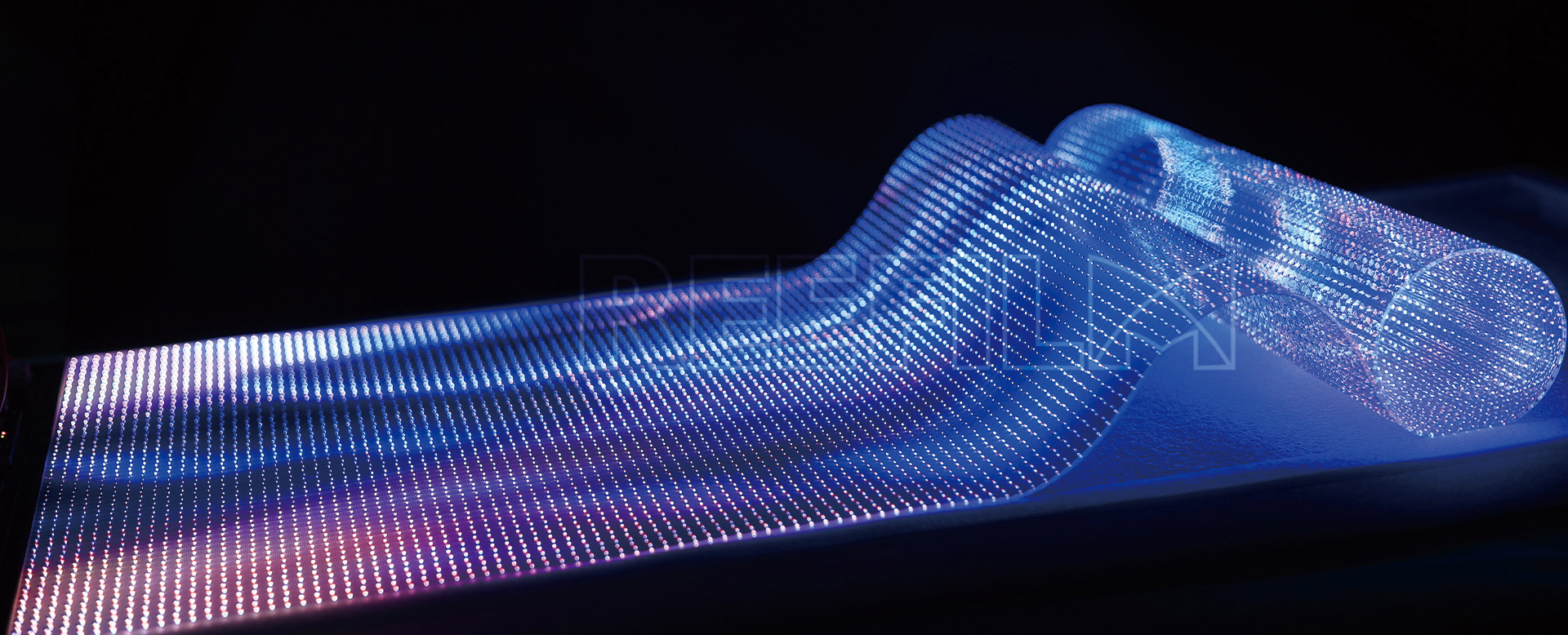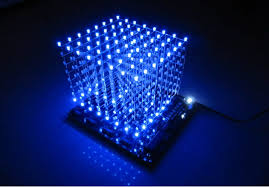
LED curved screen is a high-tech display device, and its manufacturing process involves several key steps to ensure that the screen can still provide high-quality display effects and stable performance in a curved state.

The following is a detailed process of LED curved screen manufacturing:
1. Panel design and production
Curved surface design: The manufacturing process starts with precise curved surface design. Designers use advanced design software to set the curvature and bending radius of the screen according to application requirements. This stage needs to take into account the display effect, visual experience, and the actual use environment of the screen to ensure the feasibility of the design scheme.
Material selection: The material selection of LED curved screen is very critical. Common choices include flexible LED panels and specially designed rigid panels. Flexible LED panels have good bending performance, but require special manufacturing processes; rigid panels need to be specially treated to make them suitable for bending. The choice of materials directly affects the performance and durability of the screen.
2. LED chips and backplane
LED chip integration: Integrate high-brightness, high-contrast LED chips on the LED panel to ensure high-quality display effects. The arrangement density and quality of LED chips determine the resolution and image clarity of the screen. The latest LED technology can improve display quality and energy efficiency.
Backplane manufacturing: The backplane is designed to support the bending of the panel while providing effective heat dissipation. Backplanes are usually made of aluminum or composite materials, which have good strength and heat dissipation properties. The structural design of the backplane needs to take into account the curvature of the screen to avoid deformation or damage during the bending process.
3. Bending process
Bending process: The bending process of LED curved screens is a key step. The panel is bent under heating conditions to achieve a predetermined curvature. The heating process needs to be precisely controlled to avoid damage to the panel due to overheating. When bending, it is necessary to ensure that the panel is heated evenly to prevent uneven curvature.
Curvature calibration: The curved screen must be calibrated to ensure that it meets the design requirements. This includes detailed measurement and adjustment of the curved area to ensure the consistency of the display effect. The curvature may need to be fine-tuned during the calibration process to ensure the display effect of the screen in actual use.
4. Assembly and testing
Module assembly: The curved led panel is assembled with other components such as the drive circuit and control module. This stage requires precise connection and fixation to ensure the normal operation of the screen. The assembly process also requires attention to the routing of cables to avoid affecting the bending performance of the screen.
Display effect test: After assembly, the screen will be fully tested. This includes brightness, contrast, color accuracy, and display effects in the curved area. The purpose of the test is to ensure that each screen can meet the design standards and provide a high-quality visual experience. The test also includes long-term stability testing to ensure the performance of the screen in long-term use.
5. Protection and packaging
Surface treatment: The screen is surface treated to increase its durability and scratch resistance. Common treatments include anti-scratch coating and dust-proof treatment. These treatments help improve the durability of the screen during use and protect the screen from the external environment.
Packaging: In order to protect the integrity of the screen during transportation, customized packaging materials are required. The packaging design needs to take into account the size and shape of the screen to ensure that the screen will not be damaged during transportation. Good packaging can prevent damage to the screen caused by vibration and impact.
6. Installation and commissioning
Mounting bracket: Provide an appropriate mounting bracket or hanger to fix the curved screen in a predetermined position. The mounting bracket needs to take into account the bending angle and weight distribution of the screen to ensure the stability and safety of the installation.
System debugging: System debugging of the curved screen to ensure its compatibility with the display system. Debugging includes adjusting display parameters such as brightness, contrast and color balance to achieve the best display effect. In addition, the functions of the connection interface and control system need to be checked to ensure the normal operation of the screen.
The Manufacturing process of LED curved screens involves multiple complex steps from design, material selection, bending processing to assembly, testing, protection and installation. Each step requires precise control and a high level of technical support to ensure that the final product can provide excellent display effects and lasting performance. With the advancement of technology, the manufacturing process of LED curved screens continues to develop, providing users with more diverse and high-quality display solutions.